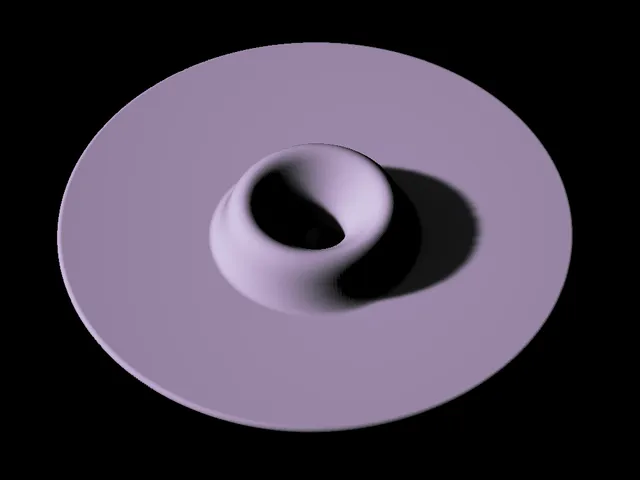
Cygnus X-1 accretion disk scaled one in ten million
prusaprinters
Originally published here: Cygnus X-1 accretion disk scaled one in ten million by tato_713 - ThingiverseThis is a representation of how it would look like the nearest region around the hypothetical, mostly agreed to be, Cygnus X-1 black hole. It is represented the inner part of the cold region of the disk, which is about the diameter of Pluto. The "middle" cold disk goes almost as wide as Saturn. The disk is actually a lot less thicker than this, but it is was made like that in order to make it printable. The silhouette was taken from Shapiro (1986), and ploted into a revolution with SolidWorks 2018. It is also included a version with the event horizon sphere.The file's names explained: name_1_x_10_y.stl is 1 : x* 10^y. So _1_6_10_7 is 1:600000000 or one in 60 million. Cygnus X-1Cygnus X-1 is one of the best, if not the best, candidate for an stellar mass black hole. Before it, the only black holes known to exist were the super-massive black holes that lay in the center of the galaxies. Its mass is about 11 solar masses and its Schwarzschild radius is about 30 km. This is the distance to the singularity that the gravity force is so strong that even light cannot escape. The spherical surface with this radius is know as event horizon. It has an stellar companion designed HDE 226868, a supergiant blue star of 20-40 solar masses. The distance between them is enough to prevent the black hole from striping away material from the star, but its stellar wind is constantly feeding the compact object and its accretion disk. Black holes are collapsed giant stars, that when reaching the end of their life, explode as a supernova, and most of their material escape, but the remaining mass collapses. If this remnant is massive enough, its turns a black hole. Cygnus X-1 was probably a star with a mass of 40 solar masses, and its companion could be significantly smaller (still bigger than the Sun). When exploded, some of its material was absorbed by the smaller star, increasing its mass and lowering its orbit. The "center" of a black hole is a point named singularity. In this point is concentrated all the black hole mass, having no radius, so an infinite density; that's why usually the density of a black hole is defined as the mass over the sphere of Schwarzschild radius. Black holes are detected by its strong source of X ray. The X rays are radiated from the inner hot part of the accretion disk (the thicker part of the model) where the gas heats up by the friction at speeds near the speed of light.Type: Black hole.Orbit: HDE 226868. Distance to the Sun: 6070 ly. Orbital period: 5h 36 min Composition: Gas (accretion disk). Density:Infinite (singularity). Dimensions: 823 km (two-temperature inner region) 1531 km (inner cold disk) 97020 km (middle cold disk)Model scale: 1:1.1x107 (23cm) 1:2x107 (12cm)ReferencesA two-temperature accretion disk model for Cygnus X-1 - Structure and spectrum. Shapiro, S. L., Lightman, A. P., & Eardley, D. M.Surf to STL function for MATLAB Other astronomical objectsInner Solar SystemArtificialNear Earth AsteroidsMain Belt AsteroidsJovian SystemSaturn SystemUranian SystemNeptunian SystemCentaursCometsTrans Neptunian ObjectsExtrasolar ObjectsSky MapsAncientSpeculativeScience Fiction
With this file you will be able to print Cygnus X-1 accretion disk scaled one in ten million with your 3D printer. Click on the button and save the file on your computer to work, edit or customize your design. You can also find more 3D designs for printers on Cygnus X-1 accretion disk scaled one in ten million.
